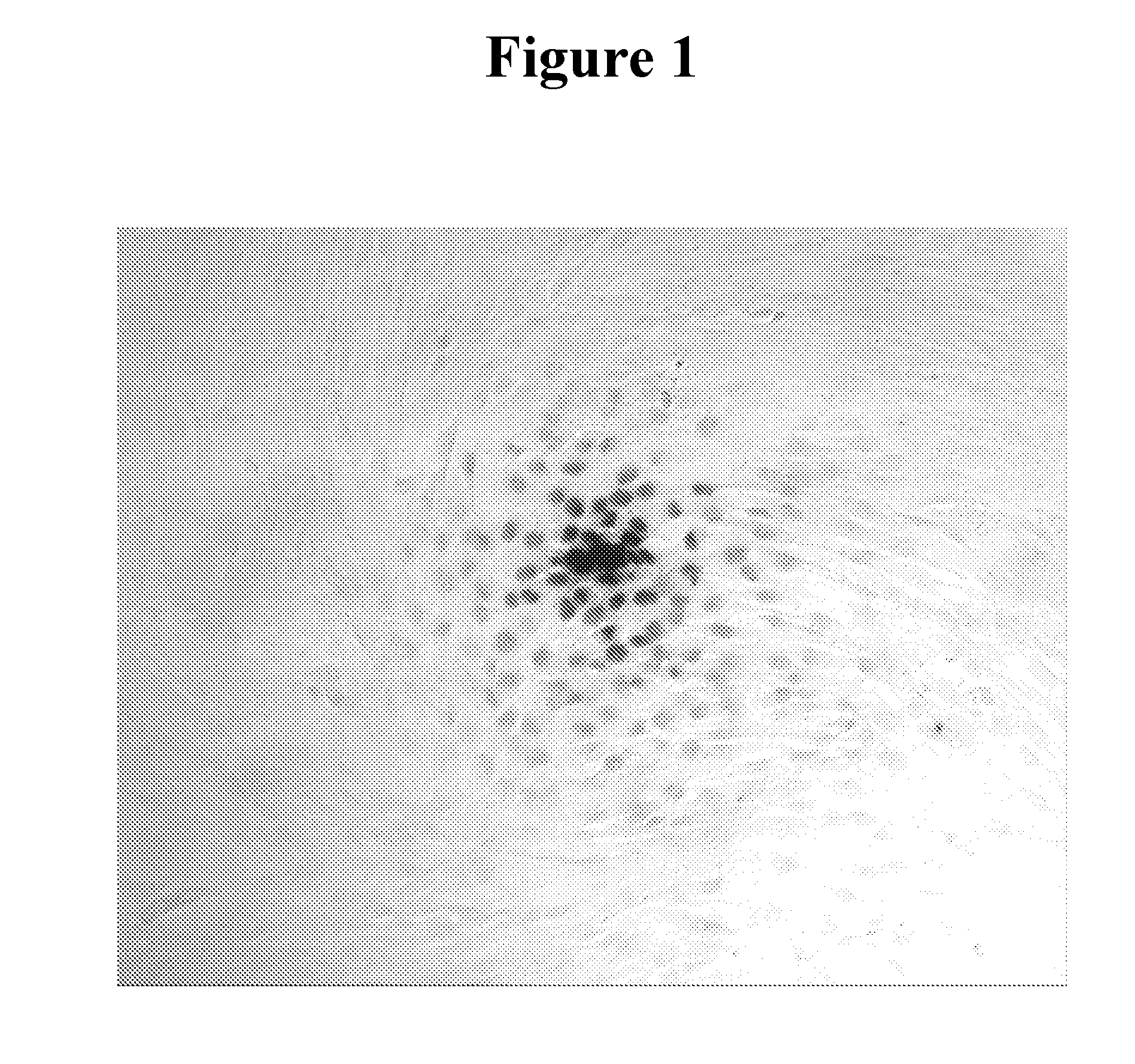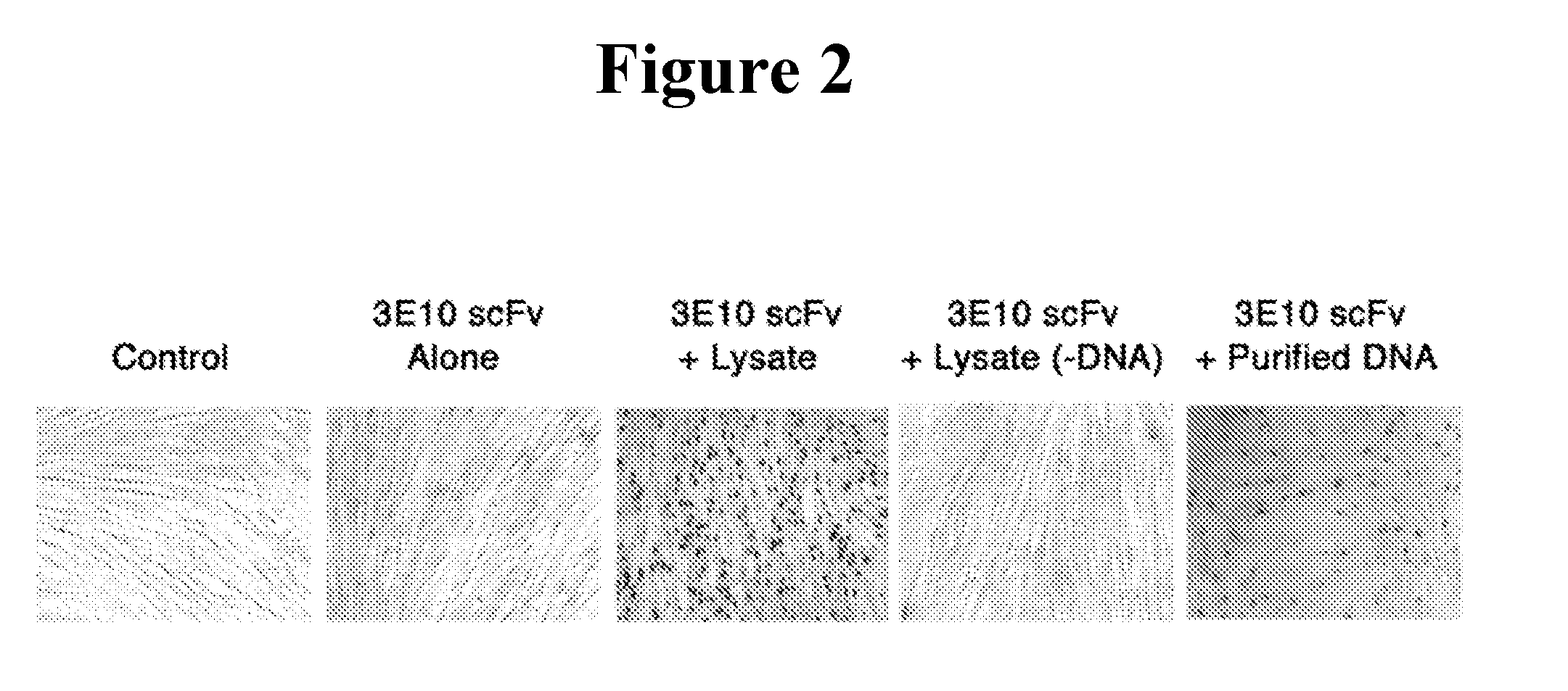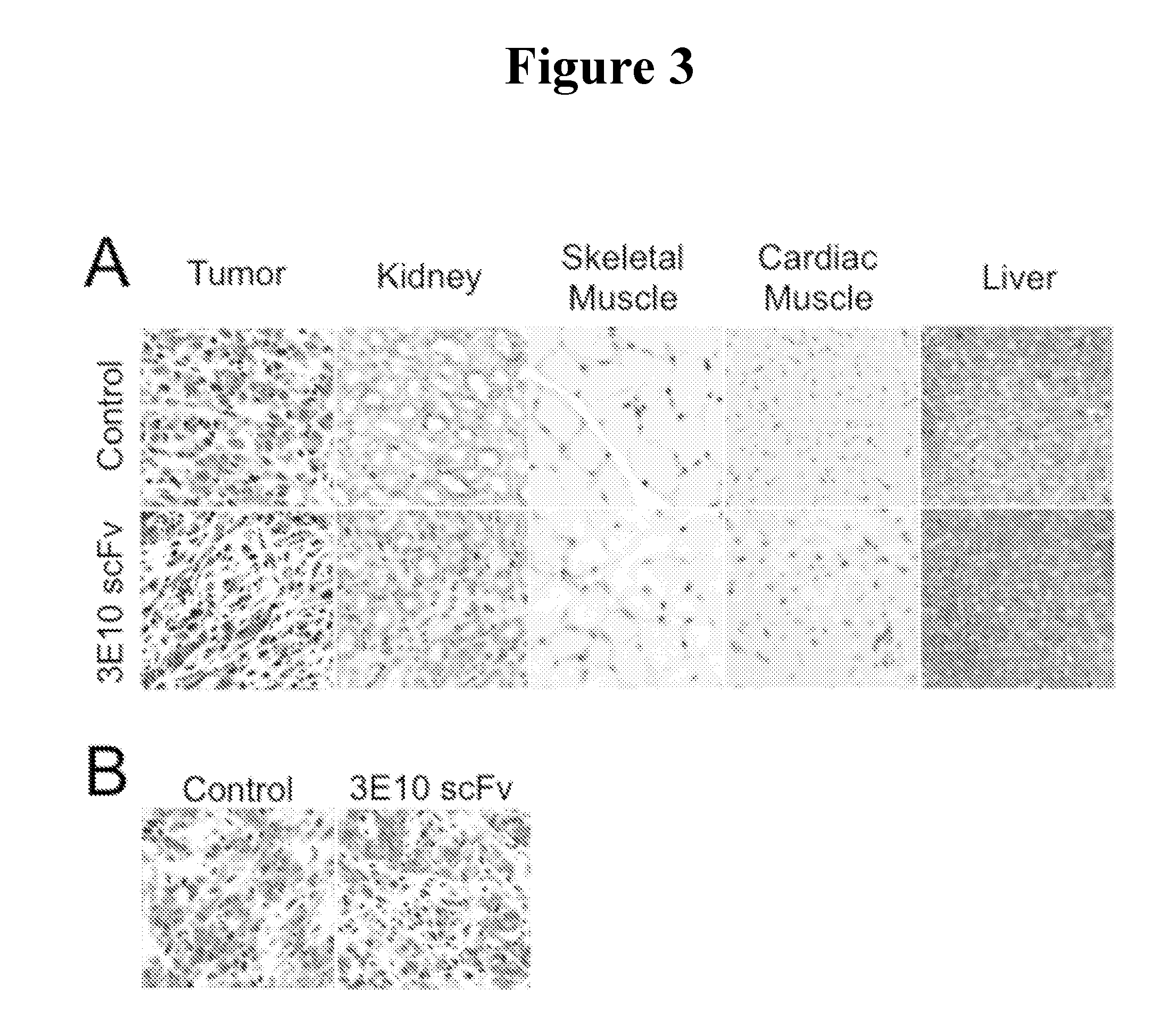Methods for dna-dependent targeting of a cell permeant antibody
dna-dependent technology, applied in the field of dna-dependent targeting of a cell permeant antibody, can solve the problem of antibodies incapable of nuclear penetration
- Summary
- Abstract
- Description
- Claims
- Application Information
AI Technical Summary
Benefits of technology
Problems solved by technology
Method used
Image
Examples
example 1
Methods and Materials
[0201]Production and Purification of 3E10 scFv.
[0202]3E10 scFv used in these studies was previously modified by a D31N mutation in CDR1 of the variable region of the heavy chain that results in a 50-fold increase in DNA-binding affinity and efficiency of nuclear penetration. 3E10 scFv was produced in P. pastoris and purified as described previously (10).
Cell Lines and Tissue Culture.
[0203]The GM02605 human fibroblast cell line (Coriell Biorepository, Camden, N.J.) was selected for these studies because it grows to confluence in 96-well tissue culture plates with remarkably high viability (>99% viability maintained over several days of growth as determined by propidium iodide exclusion assay). Cells were grown in MEM with 10% FCS and washed with MEM without serum before incubation with 10 μM 3E10 scFv for one hour. Nuclear penetration by 3E10 scFv was then examined by anti-Myc immunostaining as previously described (10).
Cell Lysate.
[0204]COS-7 cell lysate was pre...
PUM
| Property | Measurement | Unit |
|---|---|---|
| concentration | aaaaa | aaaaa |
| concentration | aaaaa | aaaaa |
| concentration | aaaaa | aaaaa |
Abstract
Description
Claims
Application Information
 Login to View More
Login to View More - R&D
- Intellectual Property
- Life Sciences
- Materials
- Tech Scout
- Unparalleled Data Quality
- Higher Quality Content
- 60% Fewer Hallucinations
Browse by: Latest US Patents, China's latest patents, Technical Efficacy Thesaurus, Application Domain, Technology Topic, Popular Technical Reports.
© 2025 PatSnap. All rights reserved.Legal|Privacy policy|Modern Slavery Act Transparency Statement|Sitemap|About US| Contact US: help@patsnap.com



